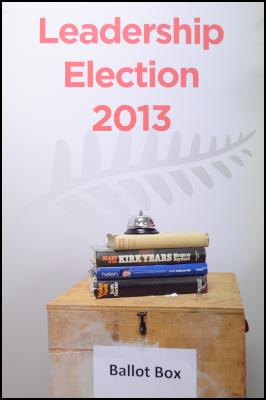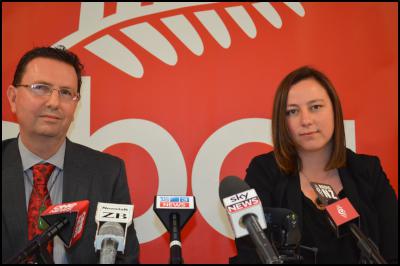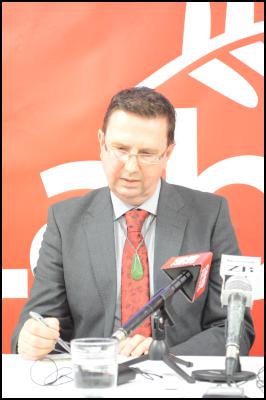David Cunliffe New Labour Leader
David Cunliffe New Labour Leader – 15 September 2013
By Hamish Cardwell

David Cunliffe is the new Labour Party leader taking 51.15 per cent of the vote, ahead of Grant Robertson on 32.97 and Shane Jones on 15.88
Making the announcement at Labour Party headquarters in Wellington, party general secretary Tim Barnett said the election had unified the party. That Mr Cunliffe took the majority of the votes in the first round gave the result “clarity”.
Mr Cunliffe got the lions share of the vote from party members with 60.14 per cent compared to Mr Robertson with 26.71 per cent, with the unions giving Mr Cunliffe 70.77 per cent of their vote compared to Mr Roberstson's 17.3 per cent.
However Mr Robertson had the majority caucus support with 47.06 per cent compared to Mr Cunliffe's 32.35 per cent.
Voting had be held at hustings meetings throughout the country over the previous weeks. Votes were weighted according to a formula with caucus allotted 40 per cent, party members 40 per cent and affiliated unions 20 per cent.
Mr Barnett said voters had a difficult decision as all the candidates were strong, but the process had made Labour stronger as a result.
The decision on Mr Cunliffe's new deputy would be made by caucus, and was likely to be early next week, Mr Banett said.
The election was triggered after David Shearer stood down in August. At the time he said Labour had not had the post-election lift they had been wanting and that he sensed that he no longer had the full confidence of his colleagues.
Mr Shearer will stay on as MP for Mount Albert.
How the voting system worked:
The
election used a single round preferential voting system
where members rank their preferred candidates.
If no candidate receives more than 50% of the first preference vote (across all three sections of the Electoral College) on the first round of counting, results for the second round will be provided.
In the second round the Electoral College result is re-calculated, with the candidate with the lowest percentage of Electoral College first preferences in the first round being eliminated, and their votes redistributed on the basis of their second preferences. One of the two remaining candidates will then exceed the 50% threshold.
Click a link to play audio (or right-click to
download) in either
MP3 format or in OGG format.


ENDS


 Richard S. Ehrlich: China's Great Wall & Egypt's Pyramids
Richard S. Ehrlich: China's Great Wall & Egypt's Pyramids Gordon Campbell: On Surviving Trump’s Trip To La La Land
Gordon Campbell: On Surviving Trump’s Trip To La La Land Ramzy Baroud: Famine In Gaza - Will We Continue To Watch As Gaza Starves To Death?
Ramzy Baroud: Famine In Gaza - Will We Continue To Watch As Gaza Starves To Death? Peter Dunne: Dunne's Weekly - A Government Backbencher's Lot Not Always A Happy One
Peter Dunne: Dunne's Weekly - A Government Backbencher's Lot Not Always A Happy One Richard S. Ehrlich: Cyber-Spying 'From Lhasa To London' & Tibet Flexing
Richard S. Ehrlich: Cyber-Spying 'From Lhasa To London' & Tibet Flexing Gordon Campbell: On Aussie Election Aftershocks And Life Lessons
Gordon Campbell: On Aussie Election Aftershocks And Life Lessons